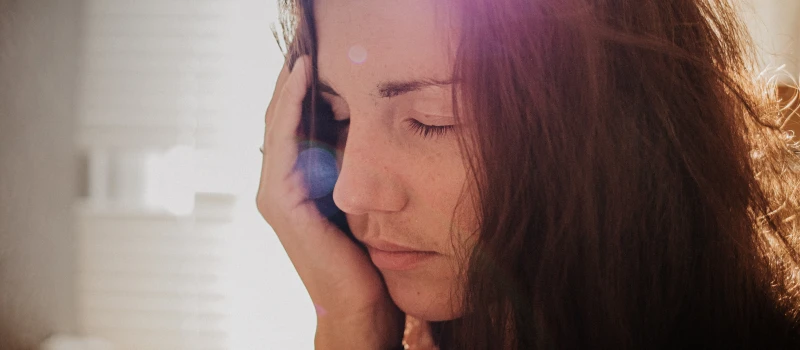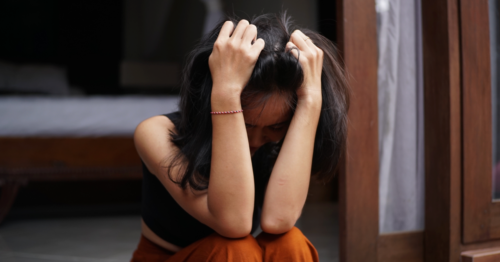
Table of Contents
Our Country is Facing a Shortage of Mental Health Professionals. Here’s How it Impacts Youth.

Written By: Dr. Rasna Kaur Neelam

Clinically Reviewed By: Dr. Jaime Ballard
November 23, 2022
10 min.
The United States is facing a shortage in mental health professional at the same time that it faces a rise in youth suicide rates and rates of adolescent mental illness.
Learn more about our Clinical Review Process
Table of Contents
Currently, the United States faces two competing crises: rising rates of mental health issues amongst American youth and a shortage of mental health professionals, especially those trained to handle pediatric and adolescent clients. Since the COVID-19 pandemic and resulting lockdowns, these crises have only worsened.
The association between youth suicide and mental health professional shortages is currently being studied
An article recently published in JAMA Pediatrics studied the ways in which the professional mental health shortage and youth suicide crisis are intertwined. It’s title, “Association of Youth Suicides and County Level Mental Health Professional Shortage Areas in the US,” reveals that the study specifically focused on youth suicide as an outcome.
Researchers asked themselves the following question: are youth suicide rates associated with county mental health professional workforce shortages?
To answer this question, the authors analyzed all youth suicides (ages 5 to 19) from 2015 and 2016. They categorized these individuals by age, sex, race (as listed on the death certificate), and whether the suicides were completed with guns.
Researchers then compared this information with data from the U.S. federal government that revealed which counties have shortages of mental health professionals, designated by the government as “Health Professional Shortage Areas” (HPSAs). Information regarding the counties themselves, including the presence of a children’s mental health hospital, percentage of children without health insurance, county socioeconomic characteristics, percentage of the county that fit into certain race classifications, county rural vs urban status, and more was also taken into consideration.
The results, listed below, may help inform future research and federal initiatives. These findings included the following statistics:
Total number of youth suicides
From January 2015 to December 2016, 5,034 young people committed suicide. This data was obtained from the U.S.Centers for Disease Control and Prevention. Only 17 counties in the United States were not included due to either having fewer than 100 children or having missing data. U.S. territories were not included in the study.
Youth suicides by sex
Of the 5,034 youth suicides, 72.8% were completed by males and 27.2% were completed by females. The information regarding suicides obtained from the CDC’s Compressed Mortality File categorized sex as male or female as listed on the death certificate without options for those who do not fit into this binary.
Youth suicides by race
Of the 5,034 youth suicides, 68.2% were by white (non-Hispanic) youth, 14.5% were by Hispanic youth, 9.7% were by Black youth, 4.4% by Asian or Pacific Islander youth, 2.9% by Indian or Alaskan Native youth, and 0.2% of unknown ethnicity. The research article did not provide additional information regarding mixed race individuals. These percentages alone do not take into account population proportions. For example, according to the most recent United States Census Bureau information, 75.8% of individuals residing in the United States identified as white only. This helps explain why such a high percentage of youth suicides were by white youth.
Suicides with firearms
Firearms are the most lethal method of suicide attempts, and suicide by forearms often occurs impulsively without proceeding mental illness. For this reason, previous researchers believed that suicide by firearms would not be impacted by the number of mental health professionals in the area. However, this study disproved this hypothesis. By including younger youth who may benefit from early interventions, this study showed that mental health workplace shortages were in fact associated with increased youth firearm suicide rates.
Counties with health professional shortages
Of the counties included in the study, 67.6% had a HSPA, or Health Professional Shortage Area, designation. This means the majority of counties in the United States have a shortage of health professionals. These counties tended to have more uninsured children, lower education attainment, higher unemployment, higher poverty, higher percentages of white residents, and were more often rural. Notably, 87.9% of counties with HPSA designation had no practicing child psychiatrists.
Do you need more support with
your mental health?
Charlie Health can help.
Comparing suicide rates in counties with and without health professional shortage
Looking at the data of counties as-is (meaning before adjusting for differences in socioeconomic and demographic factors) provides valuable insight. Youth suicide rates decreased as the number of practicing child psychiatrists increased. Youth suicide rates were lower in counties with a children’s mental health hospital. Finally, youth suicide rates were higher in counties with higher rates of uninsured children and in rural areas compared to metropolitan areas.
What does this all mean?
The quantity and quality of support that youth have within their county matter–in the forms of the youth mental health professionals, medical insurance rates, and accessibility of mental health hospitals–and are all associated with youth mental health outcomes. Supporting these critical resources may play in a role in helping to stop youth suicides.
Of note, this study was completed with the most recent data available (2015 and 2016), before the COVID-19 pandemic. Further research and data will be required to fully assess and understand the role that the pandemic has had on youth suicide and mental health rates.
Understanding the youth suicide crisis
After accidents, suicide is the second largest cause of death amongst adolescents in the United States, and rates of suicide have risen in the last decade. A common precipitating factors for youth suicide is the development of a mental health condition, something that up to 1 in 6 children in the U.S. have.
Although clinicians do not have a concrete explanation for the increase in youth suicide, recent data has given us more information to better understand and characterize the crisis. While it’s frustrating to not have specific answers, in this section, we will review what we do know.
What causes suicide and what is causing the increase in suicide?
As stated above, there is no singular cause or factor for suicide or suicidal thoughts. Although potential causes have been hypothesized, reseachers do not have a clear understanding of why suicide rates are increasing.
Some well-researched risk factors and signs of suicide, provided by Boston Children’s Hospital, include the following:
Risk factors
- Mental health conditions
- Abuse of drugs or alcohol
- Prolonged stress or stressful and traumatic life events
- Suicide of a family member or loved one
- Childhood abuse or neglect
- Access to methods of self-harm including drugs or guns
Warning signs
- Cutting of family or close friends
- Sudden changes in behavior, sleep patterns, appetite
- Preoccupation with death
- Talking about suicide
- Attempts to harm themselves
- Increase in risky behavior such as unsafe sex, drugs, or alcohol
- Loss of interest in activities that used to bring joy
Teenage suicide rates are increasing for every demographic
According to the Population Reference Bureau (PRB), a non-profit organization that collects and shares statistics in close connection with the U.S. Census Bureau, suicide rates are increasing for a multitude of different groups.
A decade ago, the suicide rate for teenage boys was 3 times higher than it was for teenage girls. However, the rate of suicide amongst teenage girls is rising. In addition, rates of suicide are increasing amongst most ethnic groups as well, most notably amongst American Indian and Alaskan Native teens.
Higher rates of suicide exist in rural and poverty-stricken areas
Suicide rates are nearly double in rural areas as compared to larger cities. States with the highest rates of teen suicide – Alaska, South Dakota, Wyomic, and North Dakota – have populations with high rural proportions. On the flip side, states with the lowest teen suicide rates – California, Conneticut, New Jersey, and New York – have populations that mostly live in cities or suburbs rather than in rural locations.
According to the Population Reference Bureau, this is due to a number of factors including social isolation, a higher prevalence of firearms, poverty, and limited access to mental health resources as prevention or in emergencies.
More lethal methods of suicide may be contributing to increase in suicide rates.
Suicide attempts involve more lethal methods today as compared to in the past. This may be driving up the numbers of successful suicide attempts amongst teenagers.
As an example, the rate of suffocation by hanging, a very deadly form of self-harm, nearly doubled from 1990-2014.
Is social media to blame?
Social media is undoubtedly a major force in the world of youth and adolescents. But does it cause an increase in diagnosed mental health conditions or even suicide?
Several large review research articles have found associations between screen time and poor mental health amongst youth. In addition, there is also an association between cyberbullying and suicidal behavior.
A research article published in 2019 examined the relationship between problematic (excessive use or internet addiction) social media usage and suicide attempts. In many of the studies they reviewed, they did find an association between problematic use and an increase risk in suicide. However, it is unclear whether problematic use is causing the self-harm, or if depression and suicidality is driving teens to spend more time on the internet. Future studies are needed to further investigate this clearly.
Youth suicide rates increased during the first year of the pandemic
In 2021, The American Academy of Pediatrics declared a state of emergency regarding child and adolescent mental illness. A study of 14 states funded by the National Institutes of Health found an increase in suicide amongst youth ages 10 to 19. Researchers obtained death certificates from 14 states: Alaska, Arkansas, California, Colorado, Connecticut, Georgia, Indiana, Montana, Nebraska, New Jersey, Ohio, Oklahoma, Virginia, and Vermont. They compared the number of yearly suicides between 2015 and 2019 with the number of suicides in 2020, the first year of the pandemic. When data from all 14 states was aggregated, the proportion of overall suicides amongst adolescents increased during the pandemic.
Possible causes (not yet proven scientifically) could be death from COVID-19 of a primary caretaker and isolation. Of note, suicide rates of adult populations ages 35 and older decreased during this same time period, giving us insight into the ways in which adolescents and youth may have coped differently with the stresses of the pandemic as compared to adults.
There is a youth mental health professional shortage crisis
In addition to the mental health crisis described above, there is also a crisis with regards to the shortage of mental health professionals, especially in schools. According to a recent research article we published:
“Across the country, school counselors are facing a more challenging workload than ever before. Since 1965, the American School Counselor Association has recommended a counselor-to-student ratio of 250:1. Only two states—Vermont and New Hampshire—meet that criteria. The most severely impacted states, such as Arizona and Michigan, have nearly triple the recommended ratio. It is worth noting there has been little research on the ‘optimal’ counselor caseload (at the time or since the recommendation).”
In addition to the crisis of schools going without mental health professionals, the majority of counties in the United States do not have a practicing child psychiatrist. In addition, while many children in the United States are facing a mental illness, only half the children who need mental health care receive it.

What are the causes of this shortage?
A number of factors are contributing to the current shortage of youth mental health professionals. Some of these reasons include:
- Age of clinicians/retiring clinicians
- Lower salary for clinicians working with children as compared to with adults
- High student loans
- Burnout from working in stressful environments
- Training required for working with kids involves additional training or schooling
- More creativity and time required for kids who require activities, exercises, role playing, games etc. vs traditional “talk therapy” for adults
Possible solutions to this crisis
Many possible solutions to this crisis exist. Among them are the following:
Funding for the training of clinicians in underserved areas
Training programs that fund and train health care professionals is needed in this climate. One program doing this work? The Health Resources and Services Administration (HRSA). HRSA is the primary federal agency for improving health to those who are underserved or living in underserved areas. Training programs through HRSA are being implemented to allow for the training of high quality behavioral health care providers that will serve underserved communities nationally.
Paying mental health professionals more
Increasing financial incentives or paying off student loans for healthcare professionals like therapists, psychologists, child psychiatrists, or other clinicians may encourage professionals who face burnout or financial strain to continue working or continue working in rural locations.
Supporting culturally-conscious clinics with additional staff
Many American Indians and Alaskan Natives living in rural communities face barriers to health care that include language barriers, cultural barriers, and more. Additionally, many families with limited English proficiency cannot access the mental health help they need. In order to ameliorate this issue, the training and implementation of interpreters, either in-person or virtually, as well as ensuring clinic staff are culturally competent should be a priority.
Meeting needs through high-quality virtual care
High quality telehealth has allowed those in rural environments far from health care personnel, those without transportation access or stable internet access, and those who are social distancing all receive the critical mental health care they need. Research has proven that this type of mental health care is effective and equivalent to face-to-face visits. At Charlie Health, our virtual behavioral health care system allows highly trained professionals to take care of our clients who need our help.
You are not alone
If you are having suicidal thoughts and are at risk for harm, please contact the suicide hotline by dialing 988 or texting at this website.
Additionally, if you or someone you know is struggling, connect with Charlie Health at this link to find virtual specialized treatment plans that are right for you.





